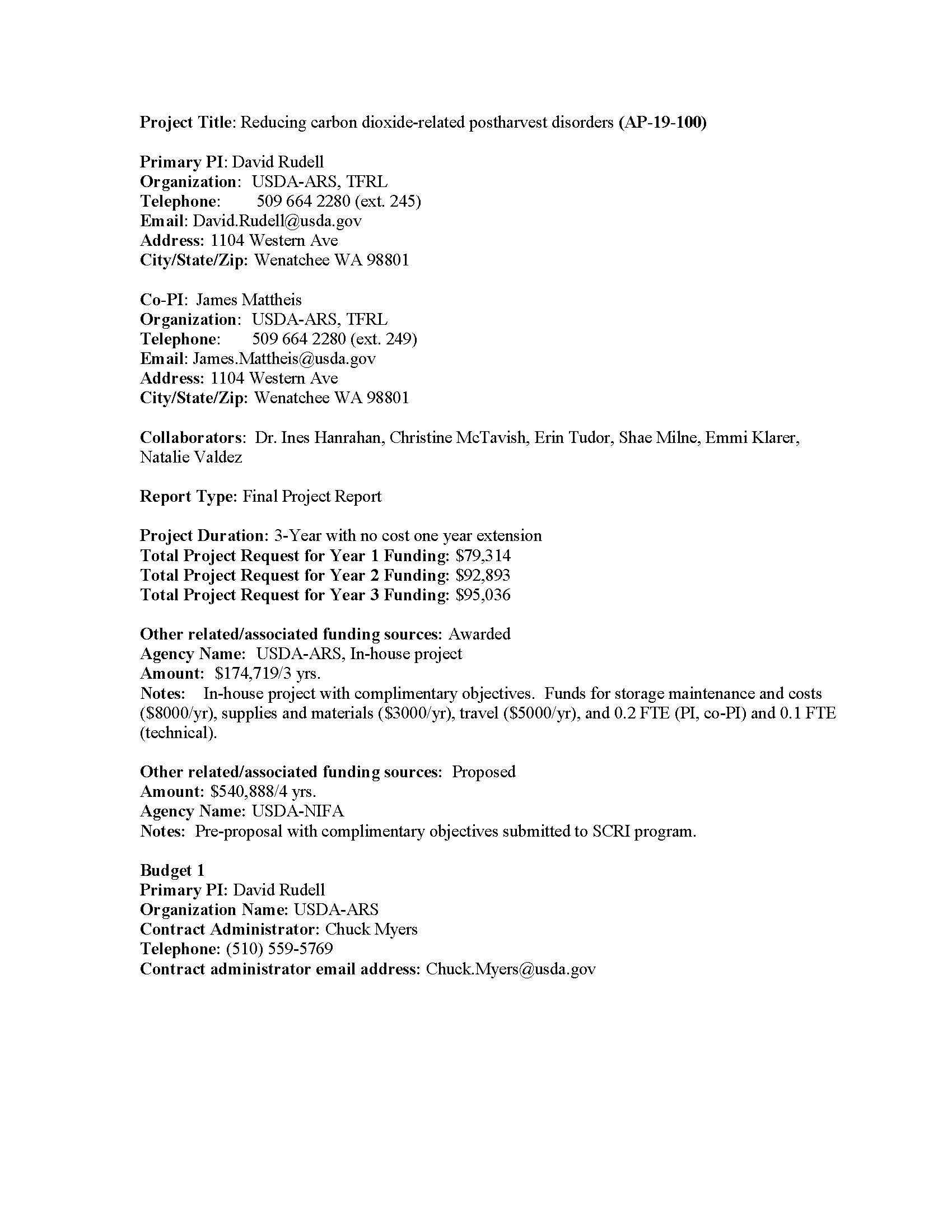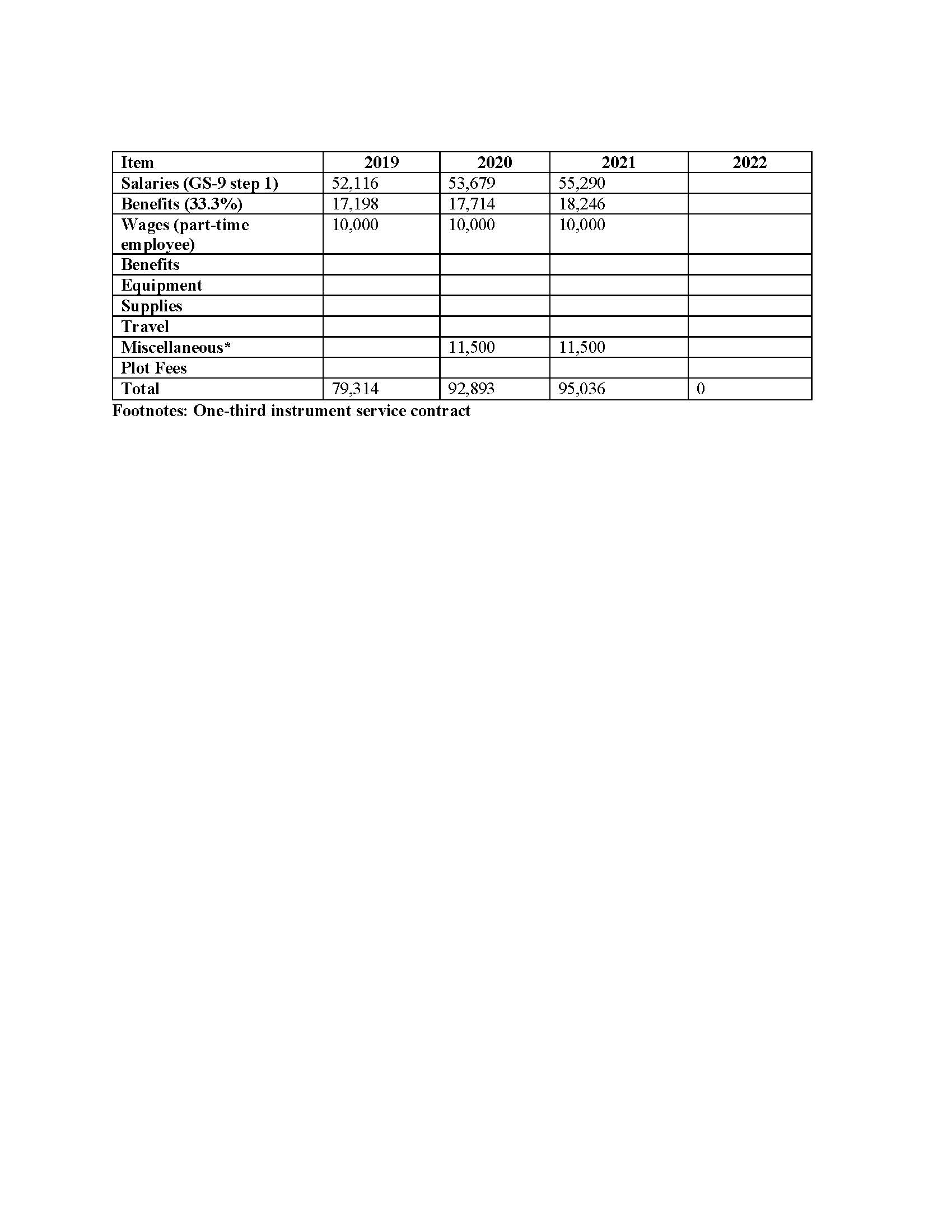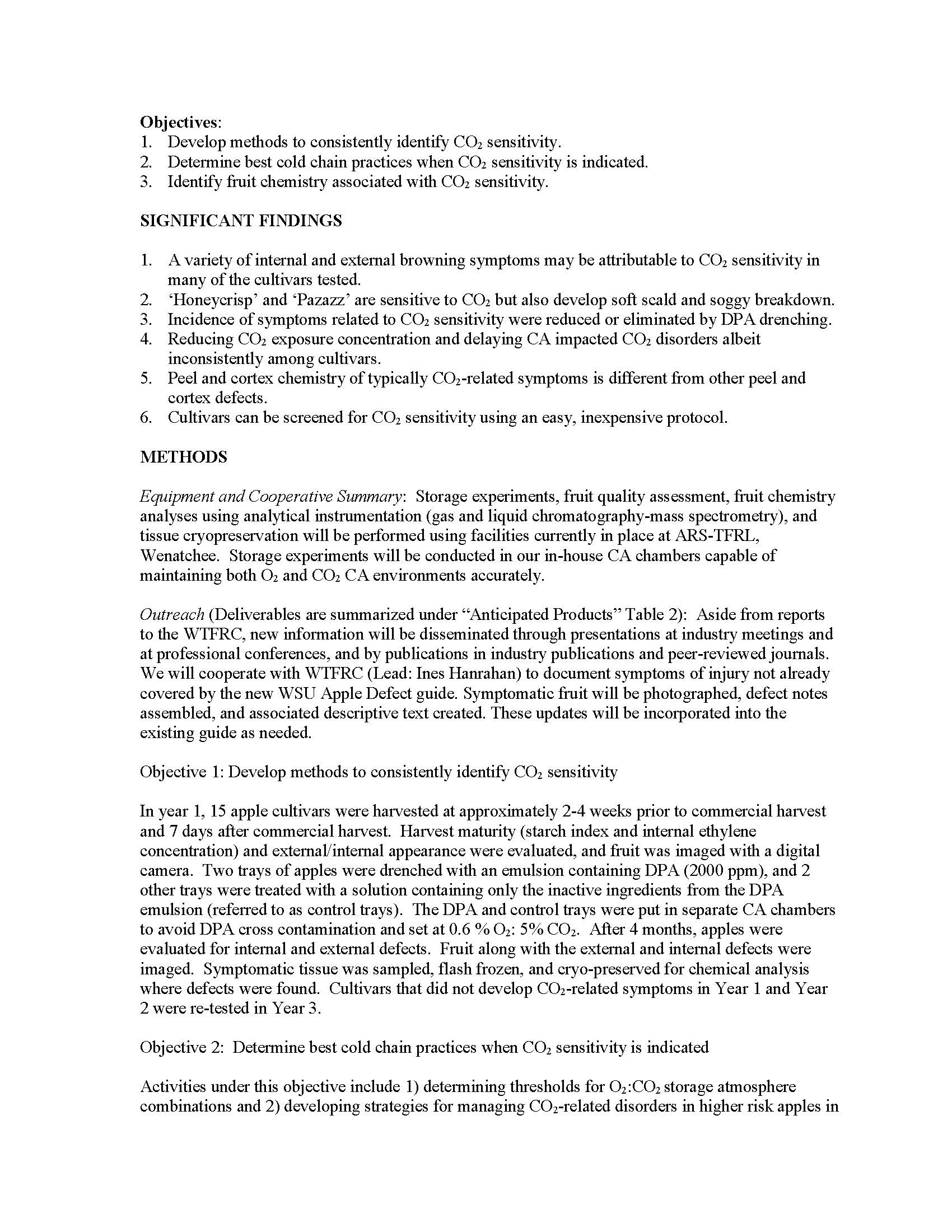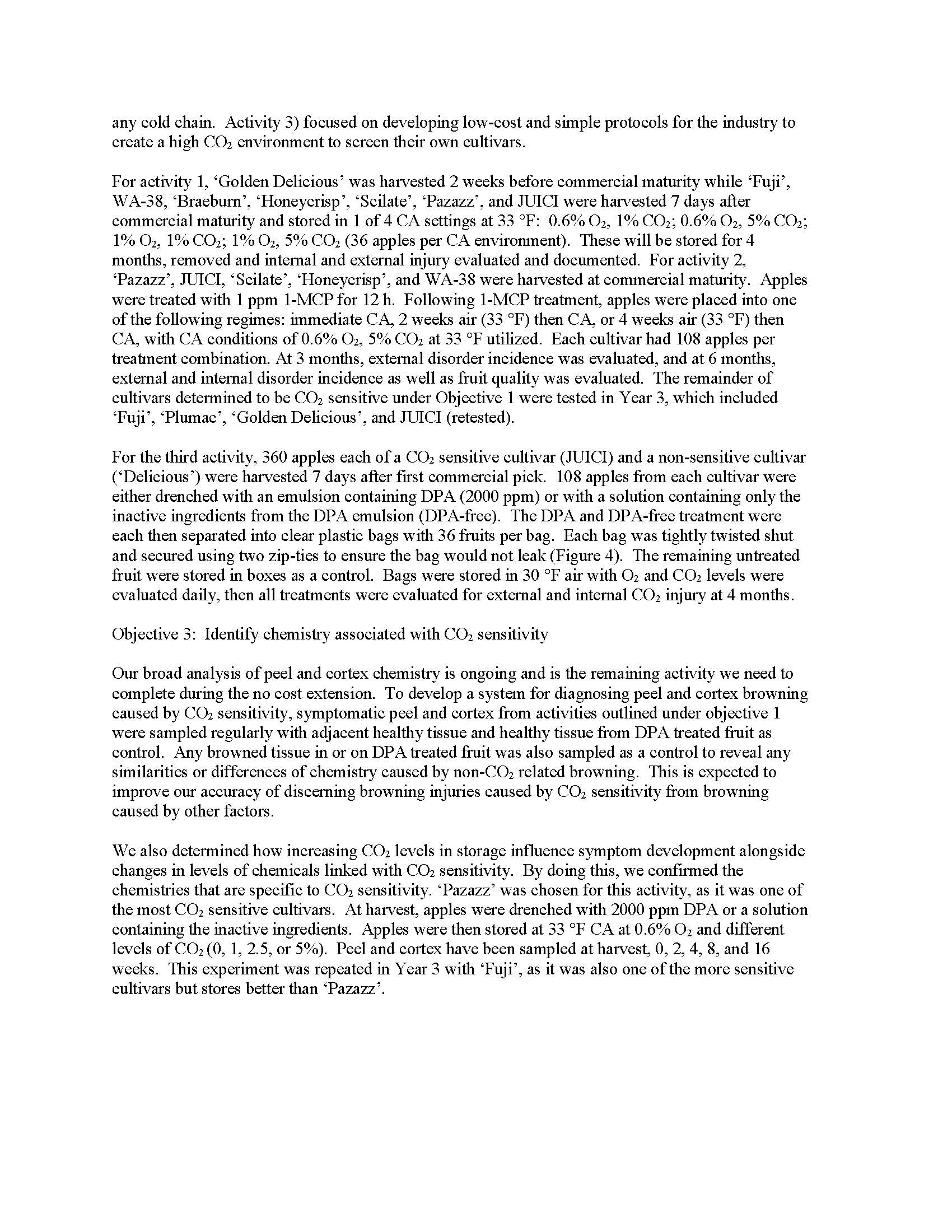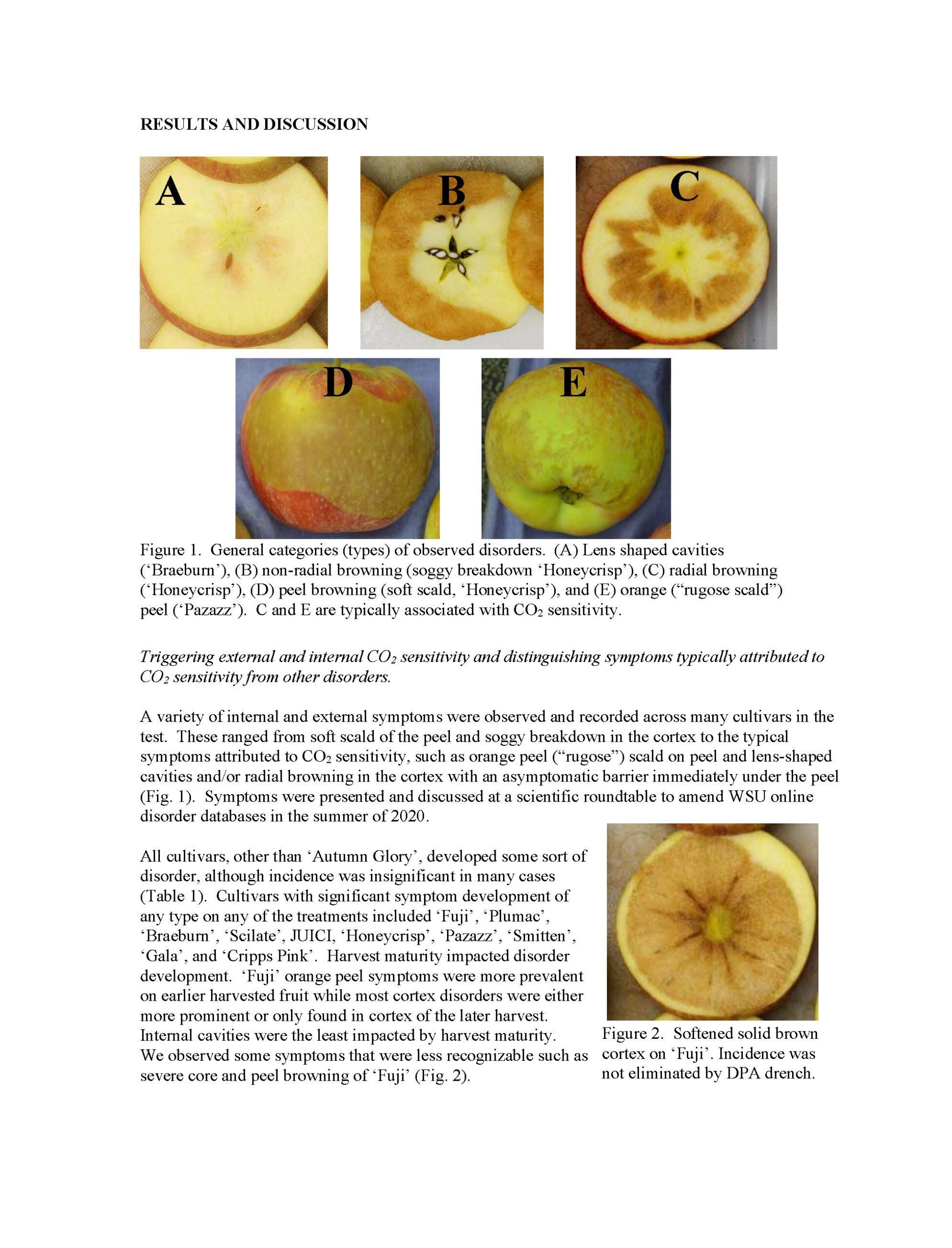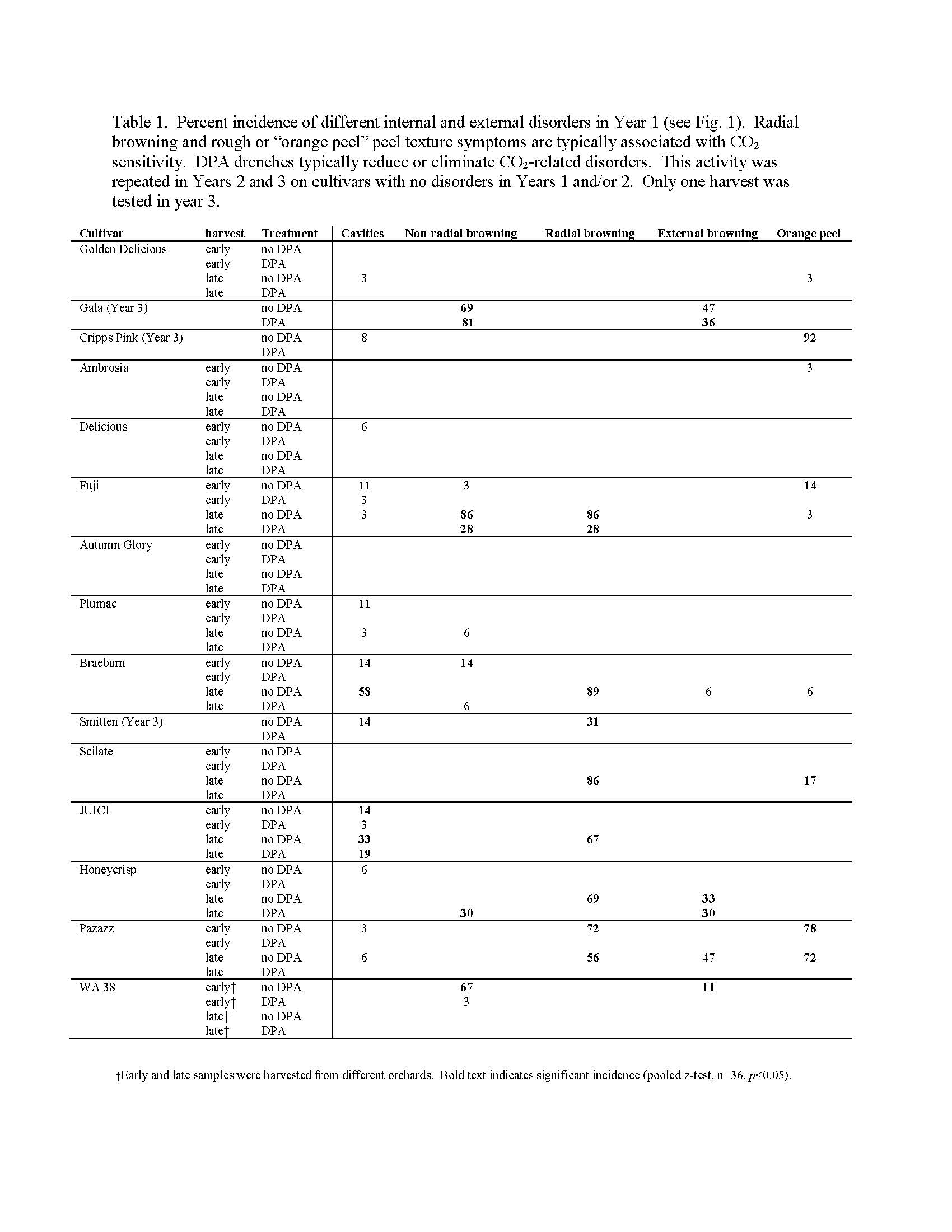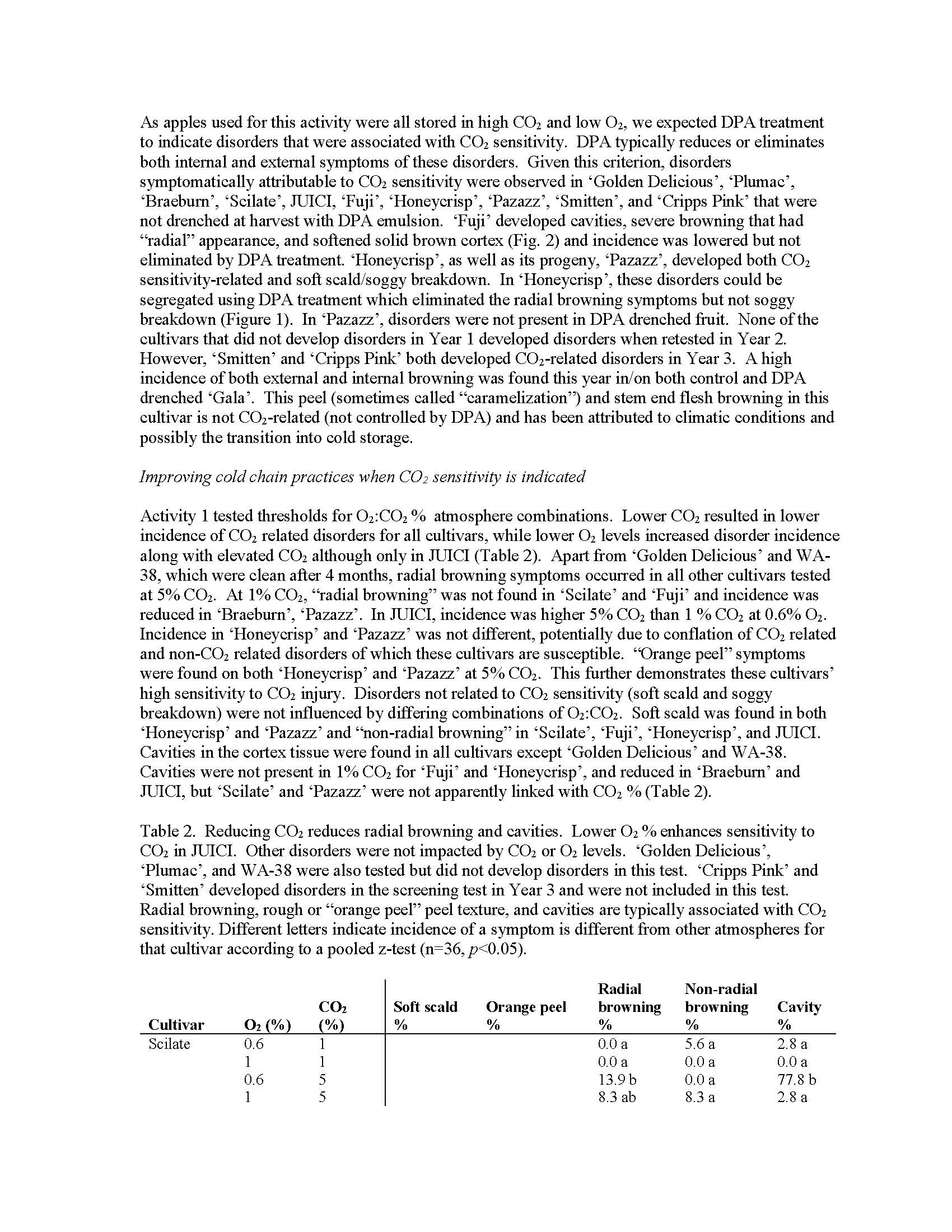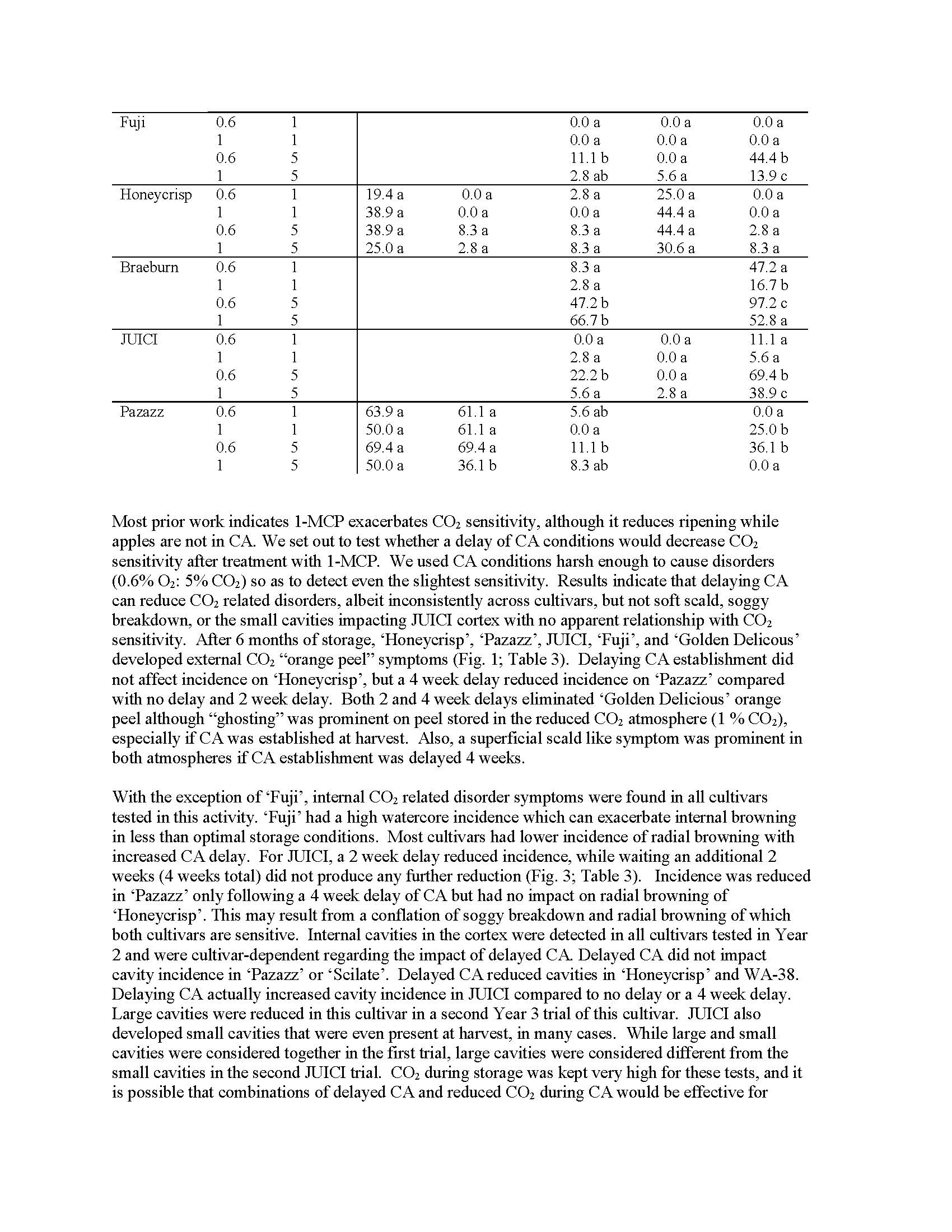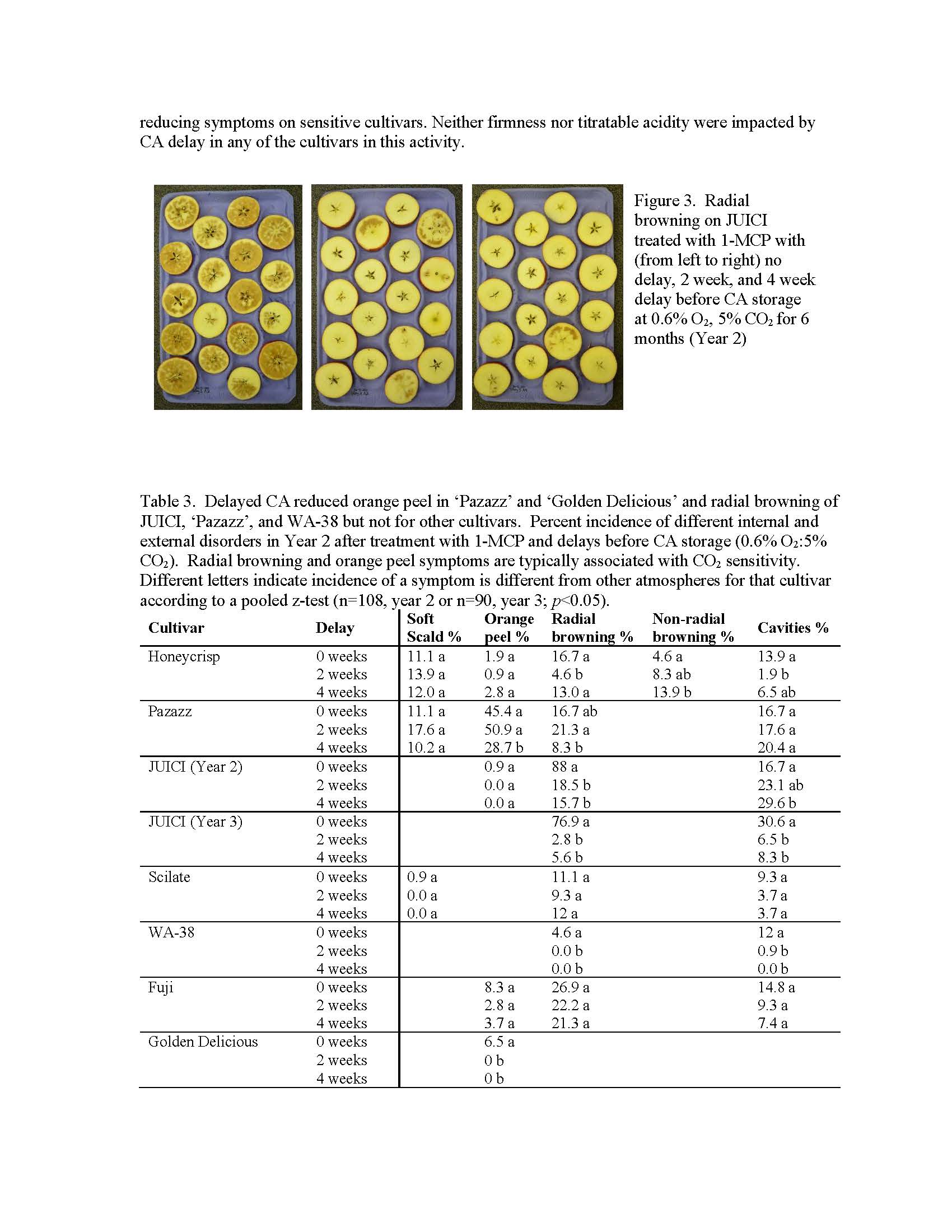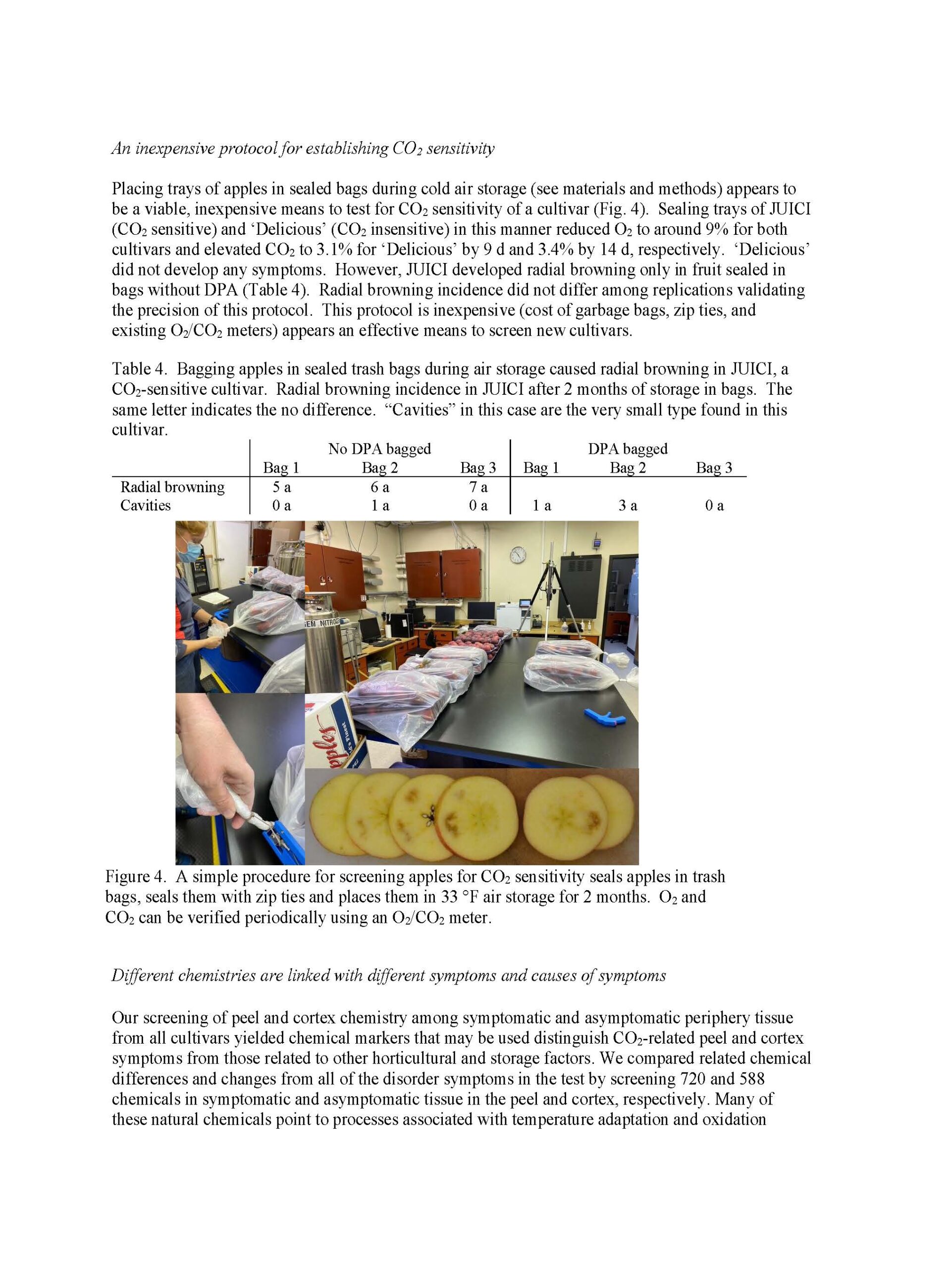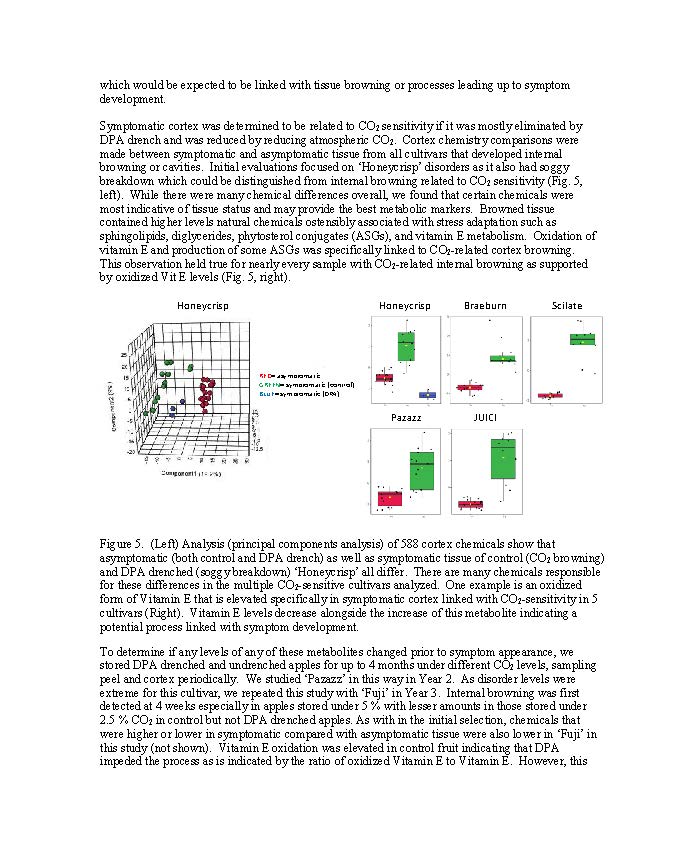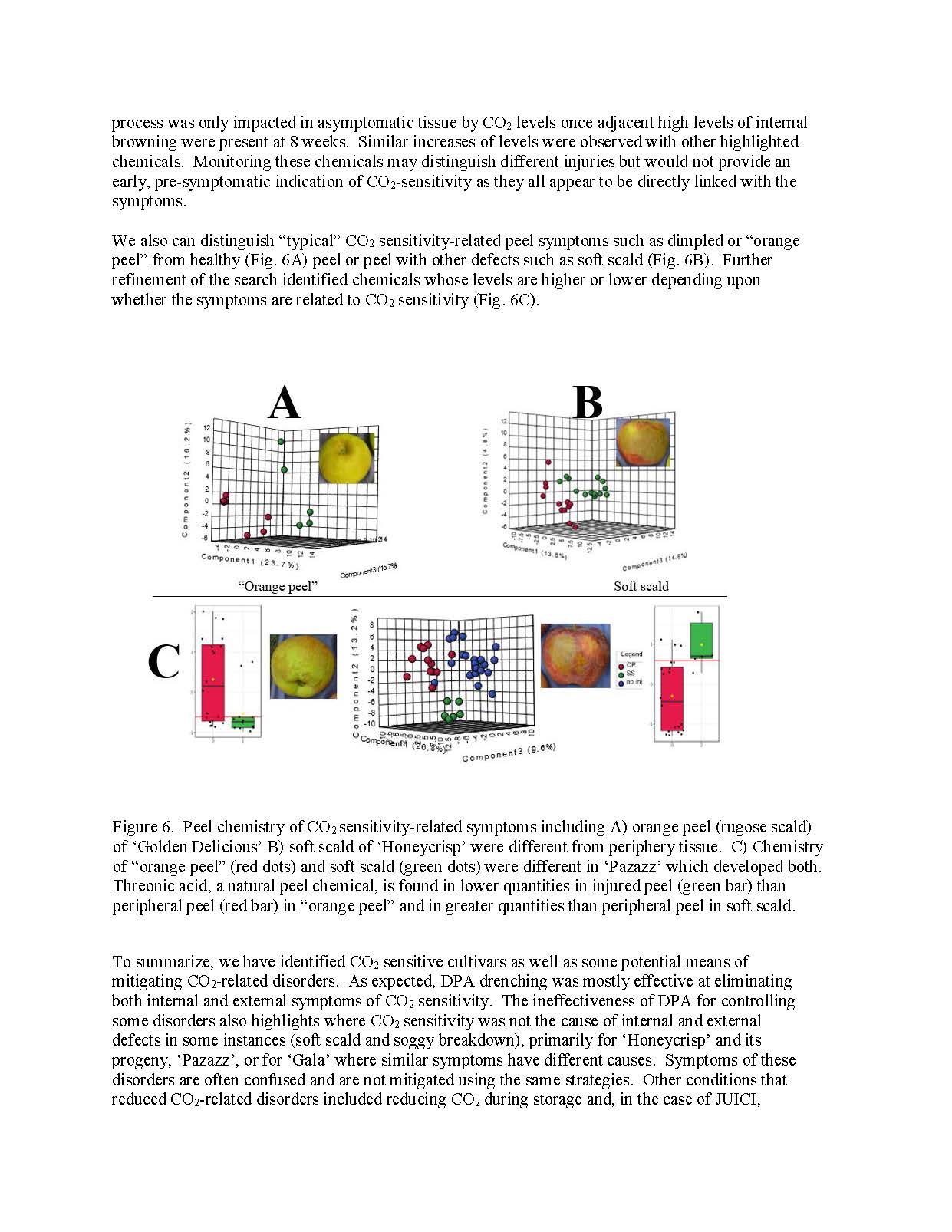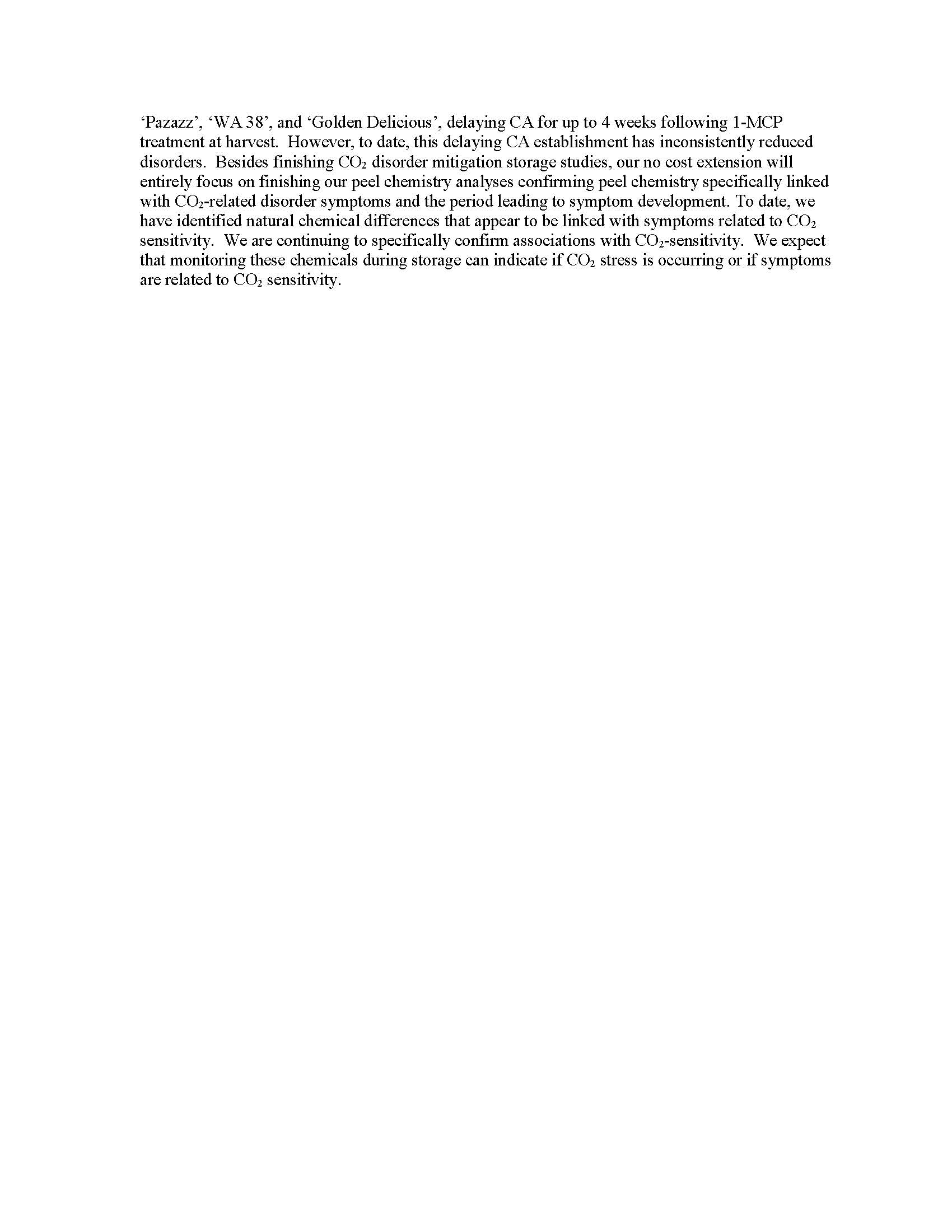Reducing carbon dioxide-related postharvest disorders
Author: David Rudell
Published: 2023
Summary: Progenitors of many newer apple cultivars are sensitive to elevated CO2 during storage. Consequently, there may also be an enhanced risk of CO2-related disorders of the peel and flesh. The appearance of CO2-related symptoms can vary by cultivar, and some cultivars can even develop similar symptoms not related to elevated CO2 levels, confounding diagnosis and subsequent mitigation. We selected 15 cultivars to determine if they are sensitive to CO2 during storage, symptom appearance, means for identifying CO2-related disorders, and how to best mitigate CO2-related disorders of these cultivars. Of those, 11 were sensitive, developing “orange peel” injuries and/or a variety of internal injuries. ‘Honeycrisp’ and a progeny, ‘Pazaaz’, develop internal and external disorders related to both CO2-sensitivity and cold storage, alone. Diphenylamine drenches eliminated CO2-related symptoms in nearly every case. Reducing CO2 to below 1% also reduced disorder incidence, unless CO2-senstivity was severe or other chilling-related disorders were also present. Delaying CA establishment for 2-4 weeks following 1-MCP treatment at the beginning of storage could reduce incidence of CO2 related disorders without losing firmness or acidity. When multiple disorders developed, levels of specific peel chemicals were elevated when symptoms were related to CO2 sensitivity. In summary, we determined that CO2 sensitivity can cause disorders in many of these cultivars, and a combination of reducing levels of CO2 during storage and delaying CA establishment from 2-4 weeks (only when 1-MCP can be used) can reduce these disorders in the most sensitive cultivars, especially when DPA drenching is not used.
Keywords:

